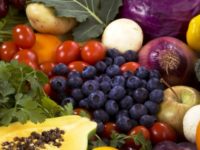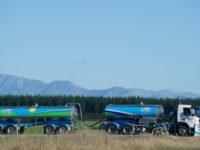 Fonterra has raised its annual earnings forecast as it cuts costs and boosts margins even as milk volumes decline.
Fonterra has raised its annual earnings forecast as it cuts costs and boosts margins even as milk volumes decline.
The Auckland-based co-operative raised its forecast earnings per share range for the current financial year to NZ45-55 cents, from a previous forecast of NZ40-50 cents, it said in a statement.
It kept its forecast payout to farmers unchanged at $NZ4.60 per kilogram of milk solids, which lifted its total available for payout to $NZ5.05-$5.15/kgMS from a previous forecast of $NZ5-$5.10/kgMS.
It expects an annual dividend of NZ35-40 cents per share, which would equate to a total forecast cash payout of $NZ4.95-$5/kgMS, it said.
Fonterra said ‘business transformation’ initiatives implemented in the first quarter are expected to deliver a recurring cash benefit of $NZ170 million ($A156.04 million) this year.
Further initiatives in the second quarter are expected to increase the recurring cash benefits to $340m and contribute to 2016 earnings and the farmgate milk price.
In the first quarter ended October 31, margins across the group increased from 14 per cent to 23 per cent from the year earlier period, while capital expenditure fell 37 per cent and operating expenses dropped four per cent.
It continues to forecast a five per cent drop in its milk volumes this year, equivalent to around 150,000 metric tonnes of whole milk powder.
Since August, it has reduced the amount of product it expects to sell on the GlobalDairyTrade platform by 146,000 metric tonnes, and it is selling more products through bilateral customer agreements for a premium price to the GDT.
“We are benefiting from the investment in new plants in New Zealand, which is improving our manufacturing options and reducing peak costs,” said chief executive Theo Spierings.
“Our strategy is moving greater volumes of milk into higher-returning products to take advantage of improved prices relative to whole milk powder.”















